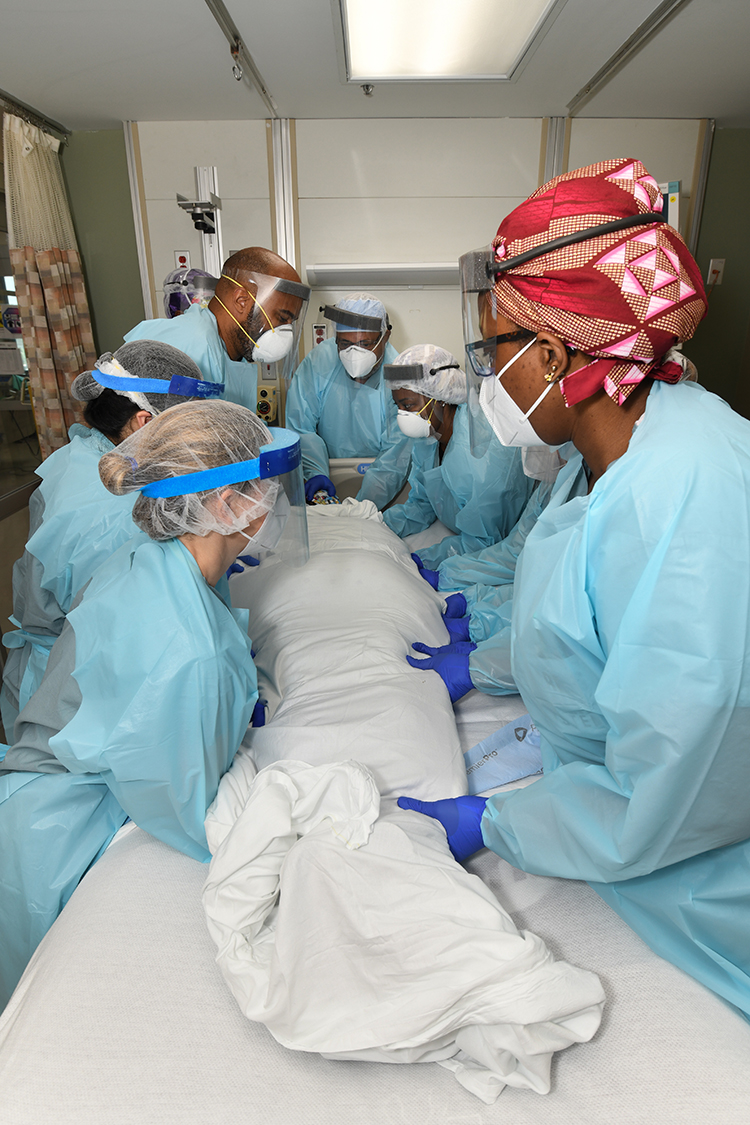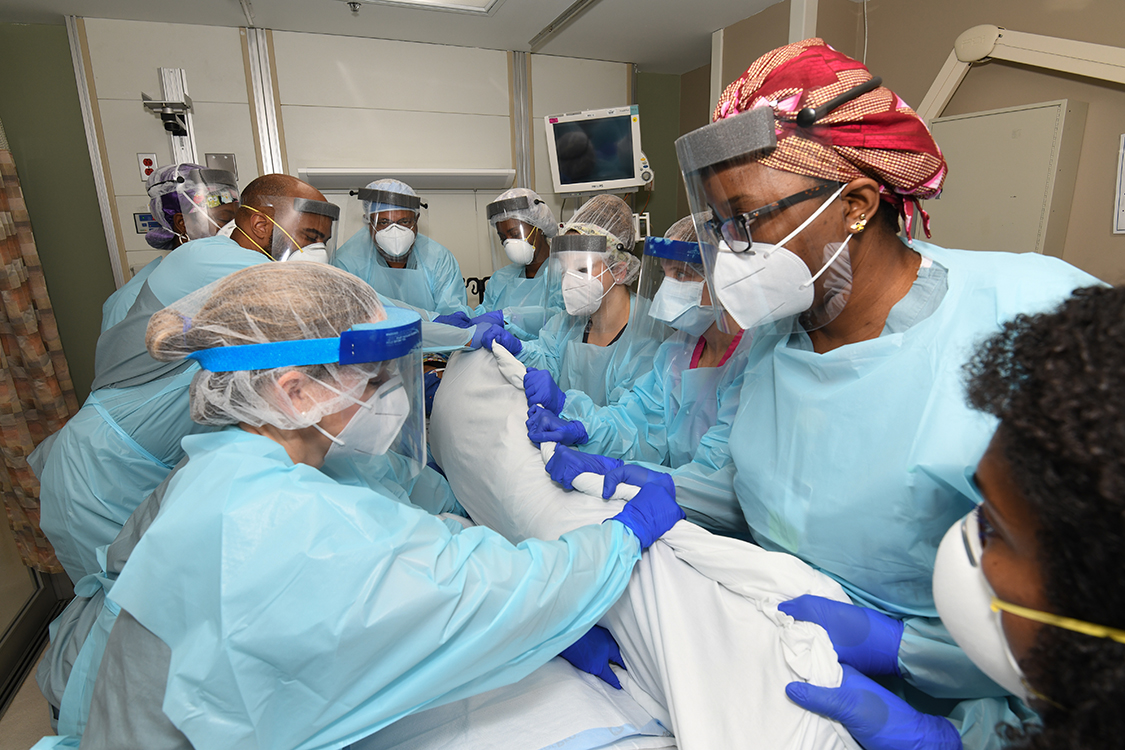HOUSTON (Aug. 5, 2020) — When COVID-19 attacks the lungs and leaves patients desperately gasping for air, prone positioning patients or proning is now a lifesaver. Teams at Harris Health System’s hospitals—Ben Taub and Lyndon B. Johnson—have perfected the technique of carefully placing patients on their stomachs to improve oxygen levels and breakup fluid buildup in the lungs.
 Pre-pandemic, the procedure was sparingly used on pneumonia or severe hypoxia (oxygen deprived) patients. When patients are placed face down, their organs including heart and diaphragm pull away from the lungs giving them better blood flow and oxygenation—a huge relief for breathing.
Pre-pandemic, the procedure was sparingly used on pneumonia or severe hypoxia (oxygen deprived) patients. When patients are placed face down, their organs including heart and diaphragm pull away from the lungs giving them better blood flow and oxygenation—a huge relief for breathing.
The procedure is taxing on both patients and staff. Patients are wrapped in sheets (cocoon style) and rolled onto their stomachs for extended times—usually 16 hours depending on the need. However, proning is not for everyone. Only patients who achieve improved oxygen measures continue.
Generally, it’s done on patients who are heavily sedated or in comas and also supported by ventilators, catheters and intravenous (IV) lines. Teams of up to six individuals from respiratory therapy, nursing, physicians, medical technicians and rehabilitation are each outfitted in full (head to toe) PPE: hair coverings, N95 masks, goggles, plastic face shields, shoe guards, gowns and gloves. The teams do patient placements (prone and supine [place face up]) up to 12 times a day.
“When we’re done, we’re drenched in sweat,” says Jerrin Thomas, director of Respiratory Care, Pulmonary Diagnostic Services and Neurophysiology Services, LBJ Hospital.
 At LBJ Hospital, the proning team has developed a reputation for its methodical approach. Christy Millette, physical therapist, and Leslie Schiff, OTR, occupational therapist and supervisor of inpatient rehabilitation, credit the multi-disciplinary collaboration with mastering the procedure and keeping patients and staff safe.
At LBJ Hospital, the proning team has developed a reputation for its methodical approach. Christy Millette, physical therapist, and Leslie Schiff, OTR, occupational therapist and supervisor of inpatient rehabilitation, credit the multi-disciplinary collaboration with mastering the procedure and keeping patients and staff safe.
Proning can take up to 45 minutes to complete, not including the time it takes to prepare patients and organize the team. Preparation of patients includes unhooking lines, ensuring proper intubation and positioning cushions under patients to avoid pressure and skin abrasions. As part of the placement, staff makes sure a patient’s spine is aligned in a neutral position and that shoulders are relaxed to avoid muscular-skeletal injuries.
“Usually when a patient reaches a stage of needing to be proned and they’re on mechanical ventilation, this is a life and death situation for them,” Millette explains.
Thomas echoes the importance of teamwork. Each member plays an important role to successfully complete it. His role is to ensure patients are properly intubated and able to breathe.
“We have to be precise because we can’t have a breathing tube accidently slip out or get some blockage,” he adds. “These patients depend on us.”
At Ben Taub Hospital, Dr. Kalpalatha Guntupalli, chief of Pulmonary, Critical Care and Sleep Medicine, and program director, Critical Care Fellowship Department, Baylor College of Medicine, recalls prescribing proning a patient at most 10 times a year prior to the pandemic. She and her team also employ having patients self-prone for at least four hours to help them improve lung oxygenation.
“Most people who are alert can’t sustain long periods on their stomachs because it’s generally uncomfortable,” she adds. “However, if they do it, they find that it works for them.”
Emily Heller, MS, APRN, AGACNP-BC, nurse practitioner, and Andrea James, nurse manager of Medicine Intensive Care Unit, Ben Taub Hospital, say the use of proning and supining has become hardwired for staff during the pandemic and the results of their efforts are noticeable.
“It’s nice to see patients in the units that are so ill show improvements after we prone them,” Heller says. “It feels so gratifying to see them get better and know that a team from all areas of our hospital can come together to help them.”